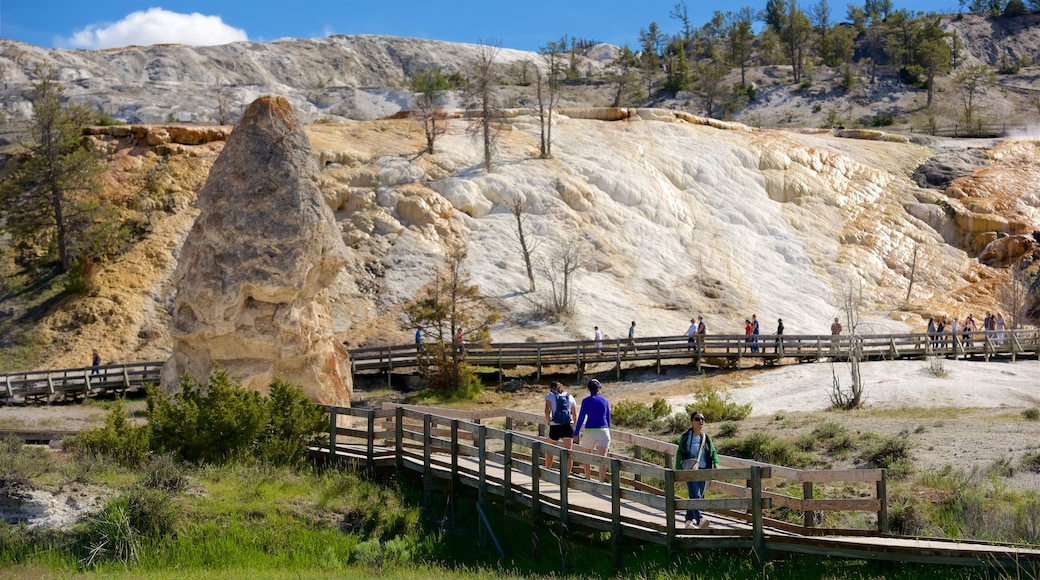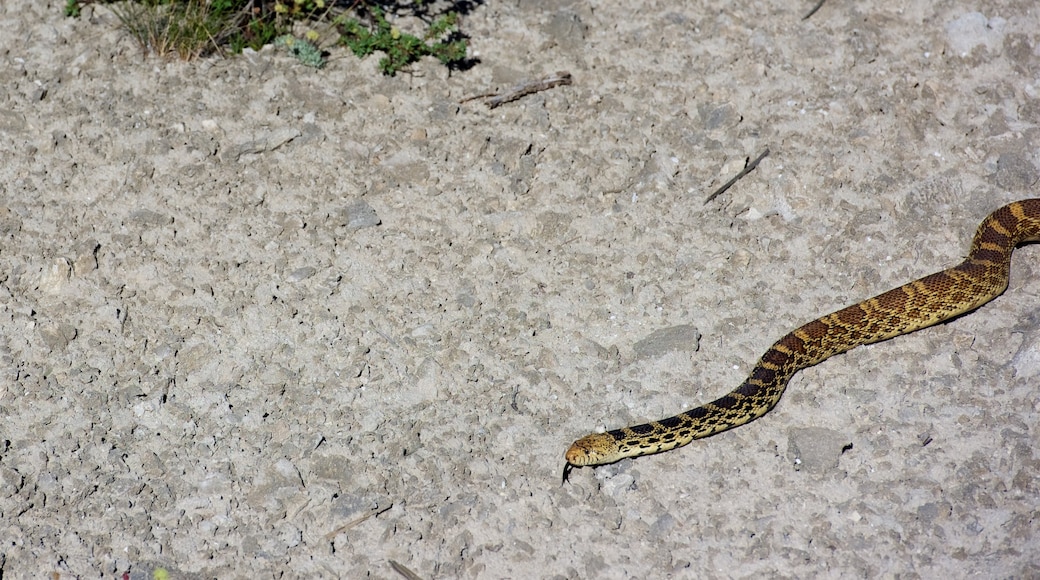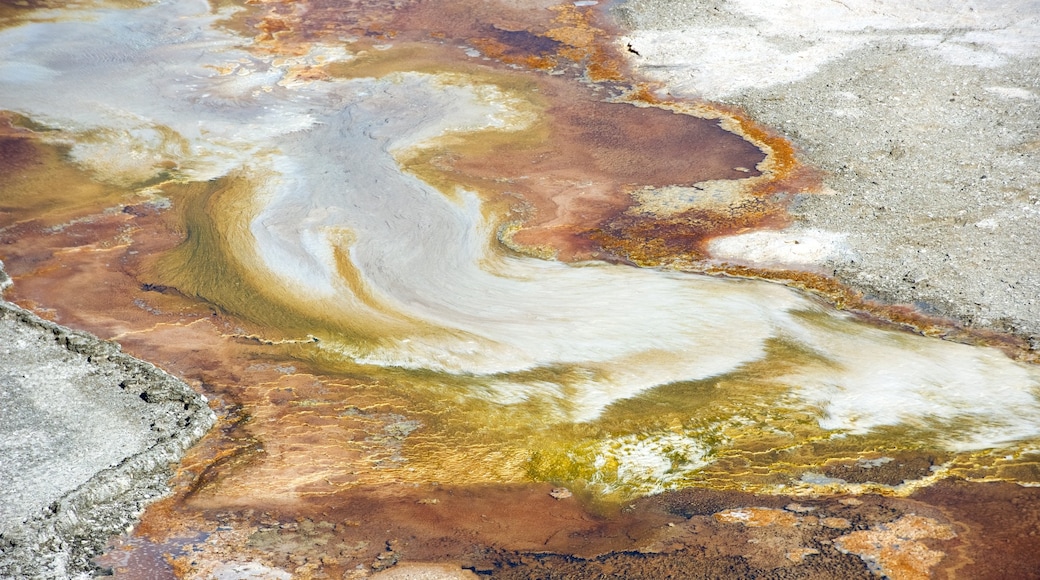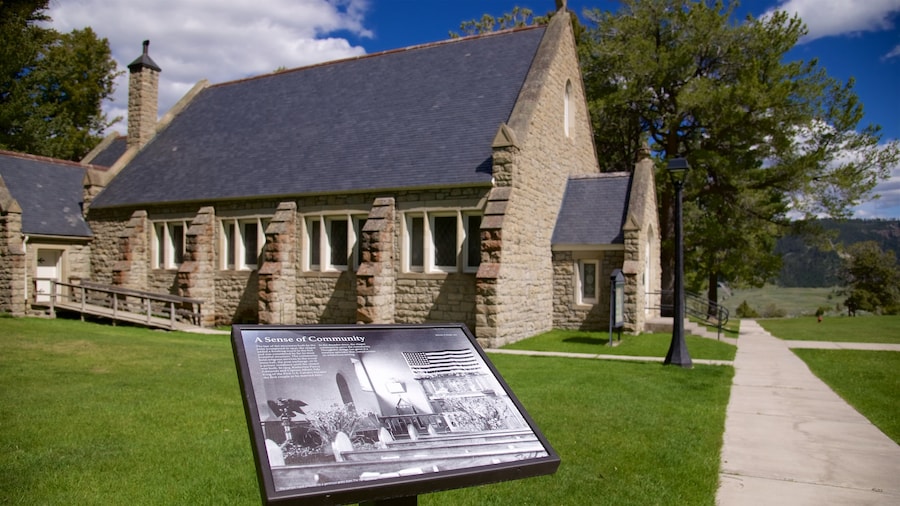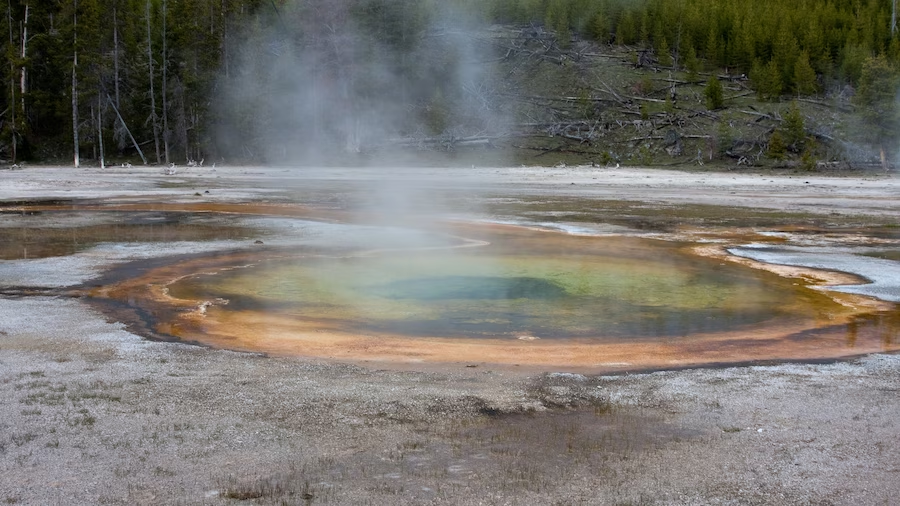Near the northern edge of Yellowstone National Park, drive around colourful travertine terraces or walk among steaming thermal features in this otherworldly area.
When you visit Mammoth Hot Springs, prepare to be mesmerized by nature. Located near Fort Yellowstone in the Mammoth Hot Springs Historic District, the hot springs are one of Yellowstone National Park’s most iconic destinations.
Mammoth Hot Springs was created over many millennia as hot spring water cooled and left deposits of calcium carbonate. The colourful runoff from the naturally white terraces is caused by bacteria and algae that thrive in the spring’s warm waters. All of this serves as a visible reminder of the deep volcanic and thermal forces at work in Yellowstone. To learn more, read informative plaques placed throughout the area.
Mammoth Hot Springs is divided into Lower and Upper Terraces. Explore the Lower Terraces via a network of boardwalks. The boardwalks eventually connect to the Upper Terraces Loop, which you can also access by car.
Check out the lower terraces of Minerva Spring. These famously elaborate travertine formations have cycles of wet and dry periods. Even when dry, colourful algae present a stunning sight. Admire Liberty Cap, a hot spring cone extending 45 feet (14 metres) in the air. The towering rock apparently earned its name because of its resemblance to hats worn during the French Revolution.
Cross the road, where Opal Spring is encroaching on a residence designed by Robert Reamer, the architect of Yellowstone landmarks such as the Old Faithful Inn and Roosevelt Arch. Opal Terrace seems to be a favourite lounging location for elk, providing a great photo opportunity. While the elk may look peaceful, be sure to stay the required distance from them as they can become aggressive.
Explore Mammoth Hot Springs on foot or by car. Follow a 1.5-mile (2.4-kilometre) one-way road in a counterclockwise loop around the Upper Terraces. From the overlook, enjoy stunning views of the Lower Terraces and Fort Yellowstone. The area’s boardwalks are wheelchair accessible rent a wheelchair at the visitor centre if needed. Join one of the guided ranger walks, which leave daily from the Upper Terraces. Always stay on the boardwalks and marked trails as the travertine and very hot thermal waters can be extremely dangerous.
